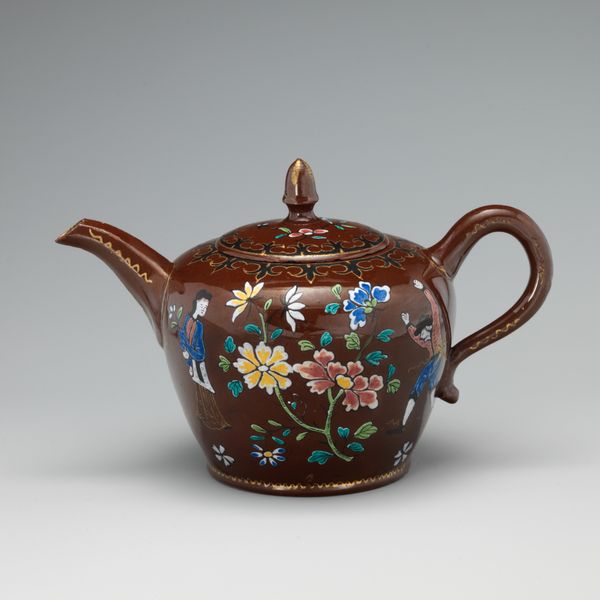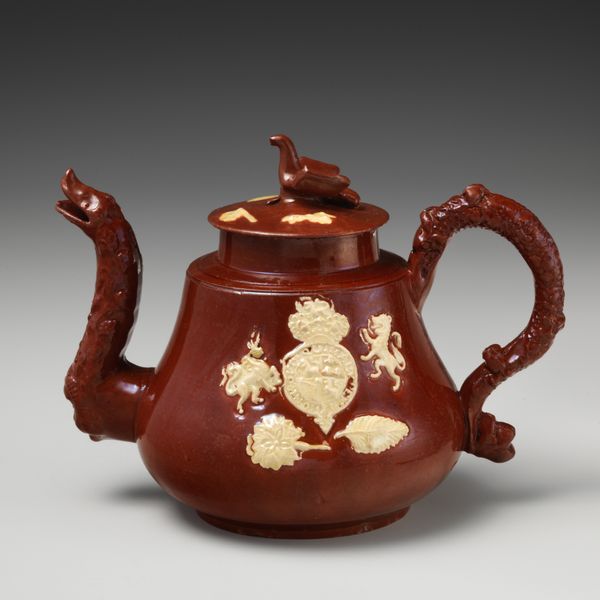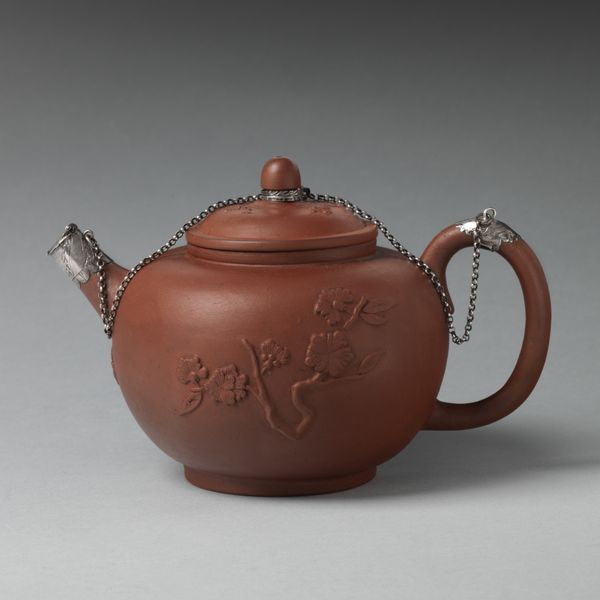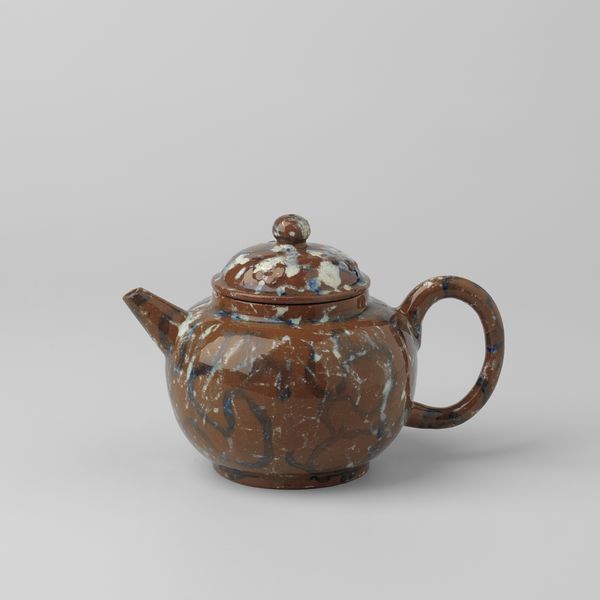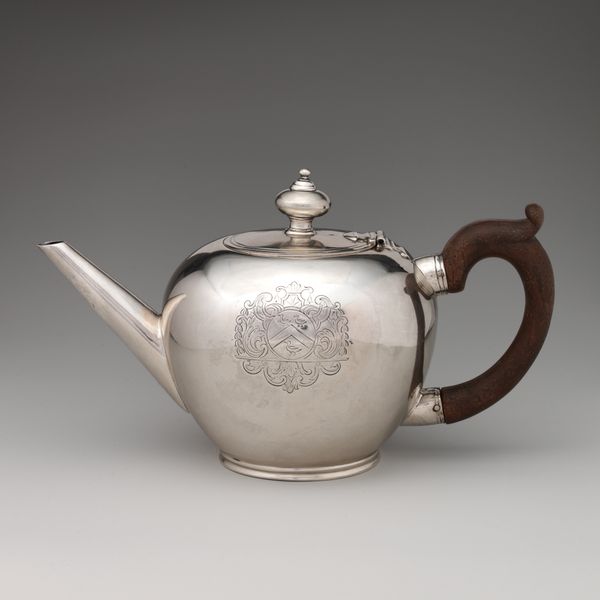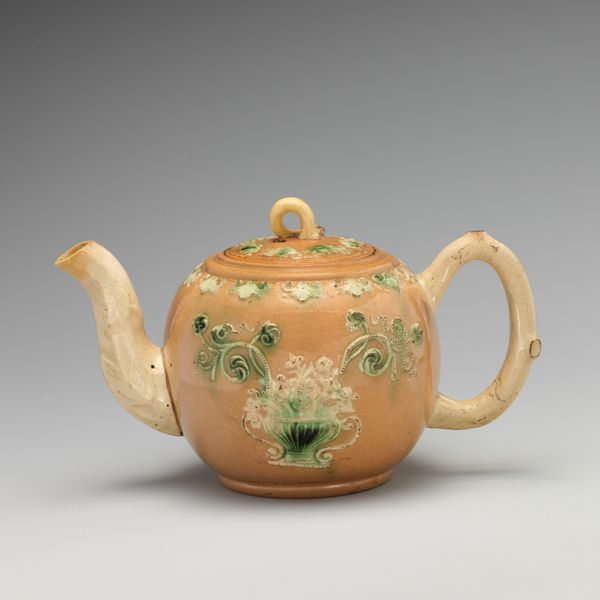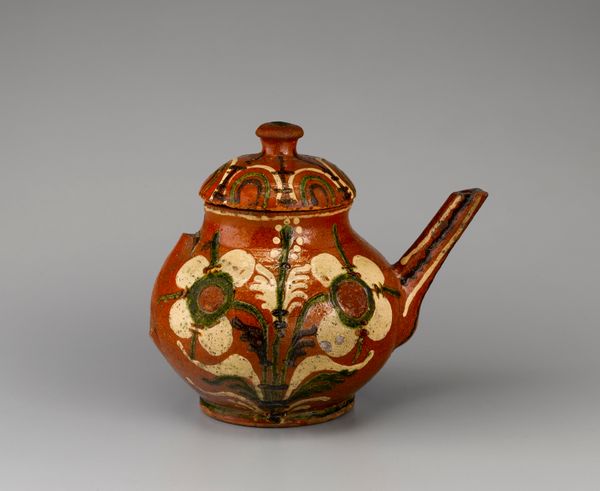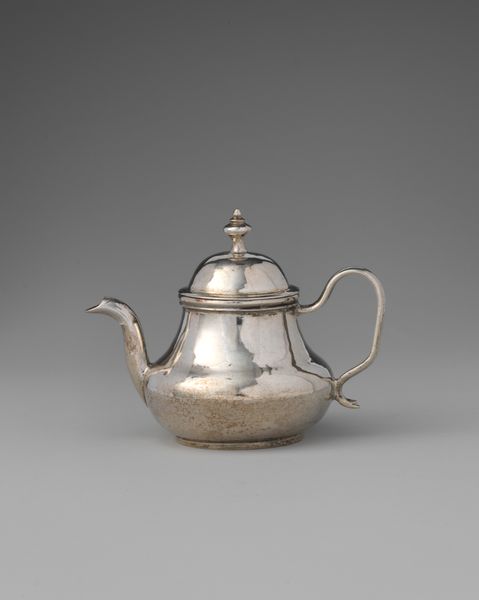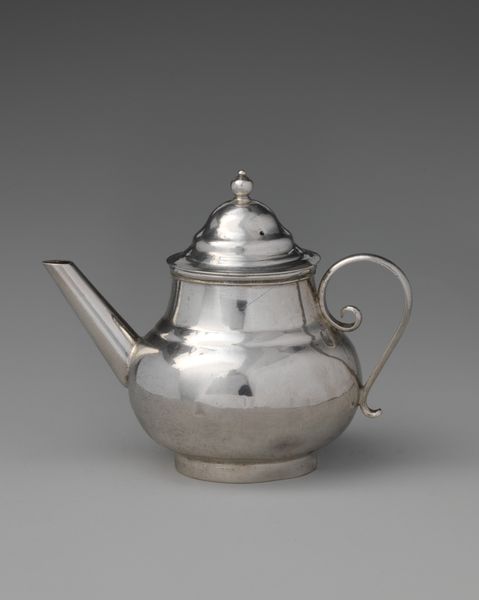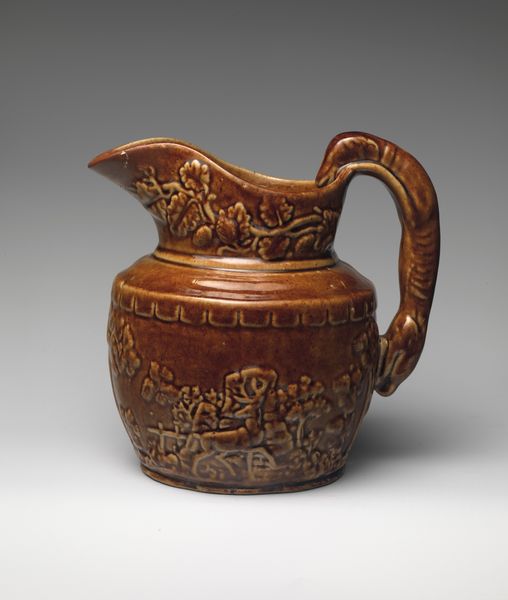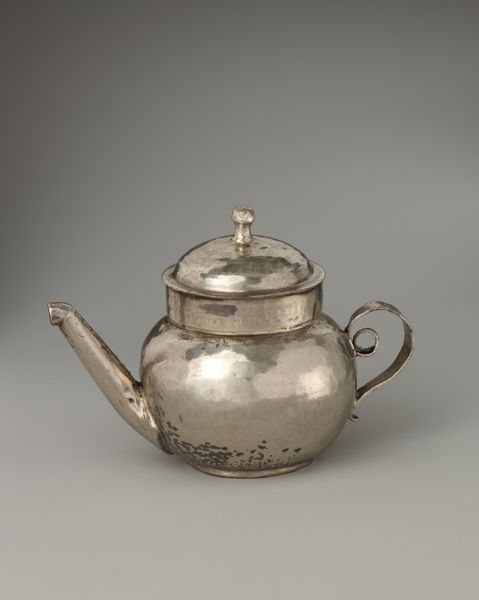
ceramic, earthenware, sculpture
#
ceramic
#
earthenware
#
sculpture
#
decorative-art
#
rococo
Dimensions: Height: 4 1/2 in. (11.4 cm)
Copyright: Public Domain
This brown salt-glazed stoneware teapot was created by John Astbury in England, circa 1730. The lustrous glaze and bulbous form immediately grab the eye, while the pale sprigged decorations offer a stark contrast to the rich, dark body. The placement of these ornaments isn't random; they form a constellation across the pot's surface. Each emblem—a fleur-de-lis, a lion, a crown—functions as a signifier. They hint at power, lineage, and perhaps national identity, inviting us to decode their meanings. Astbury's choice of stoneware challenges traditional notions of luxury. By elevating a utilitarian material with sophisticated design, the teapot destabilizes established social categories. It invites us to reconsider the value we place on materials and the symbols they carry. The teapot's materiality and design act as a microcosm of broader cultural and philosophical shifts. In its form and decoration, it reflects a society in flux, grappling with new ideas about class, taste, and the very nature of representation.
Comments
No comments
Be the first to comment and join the conversation on the ultimate creative platform.
